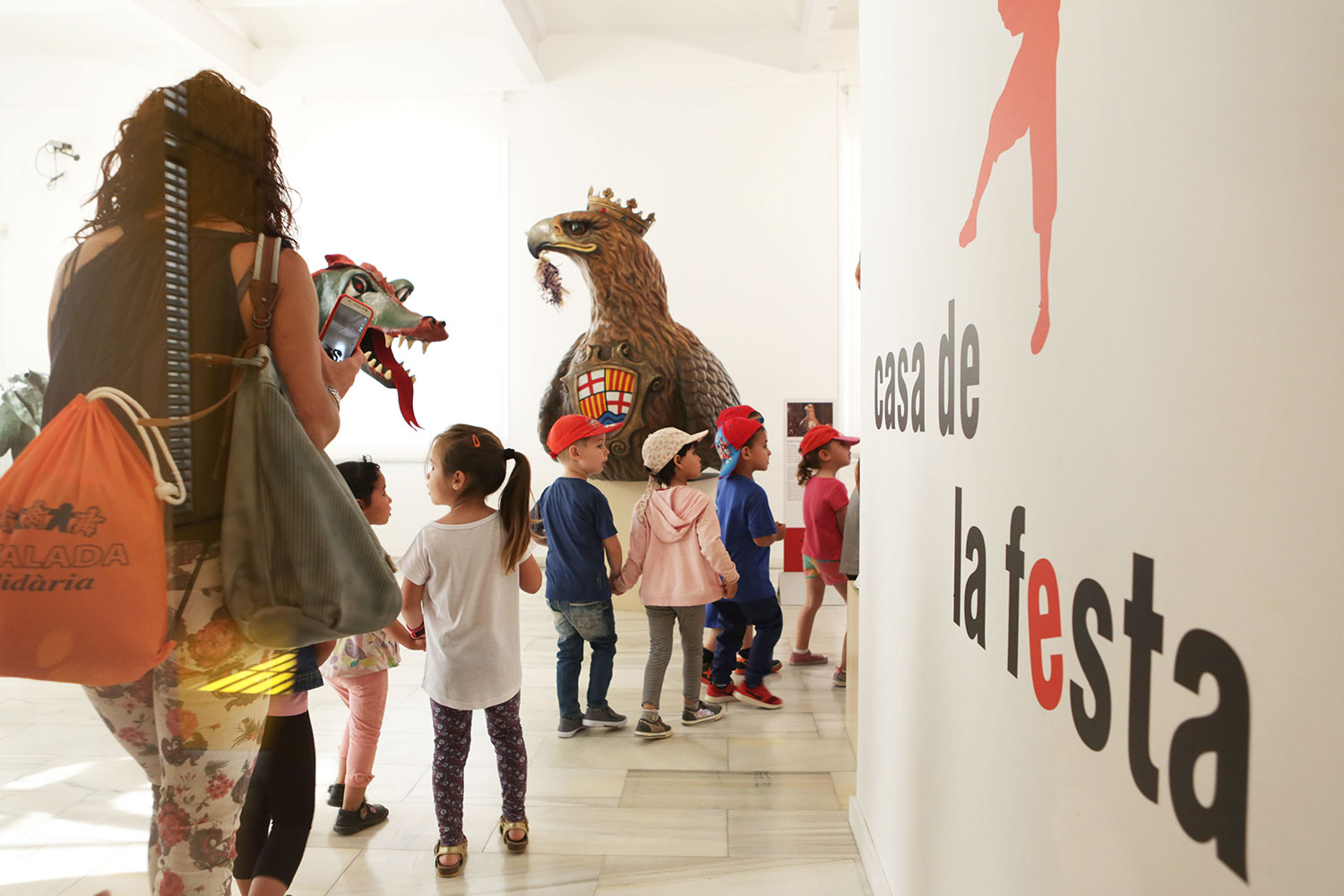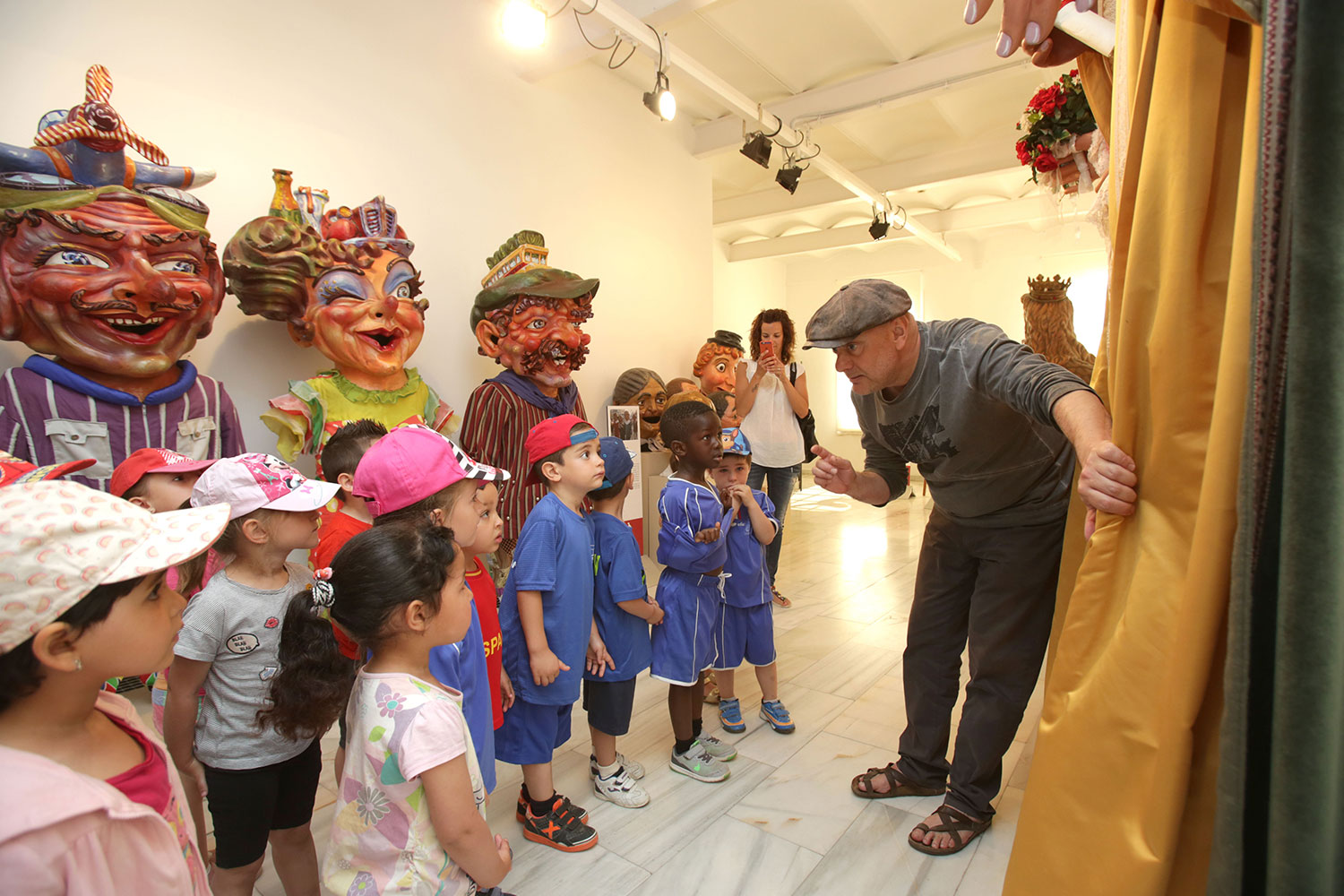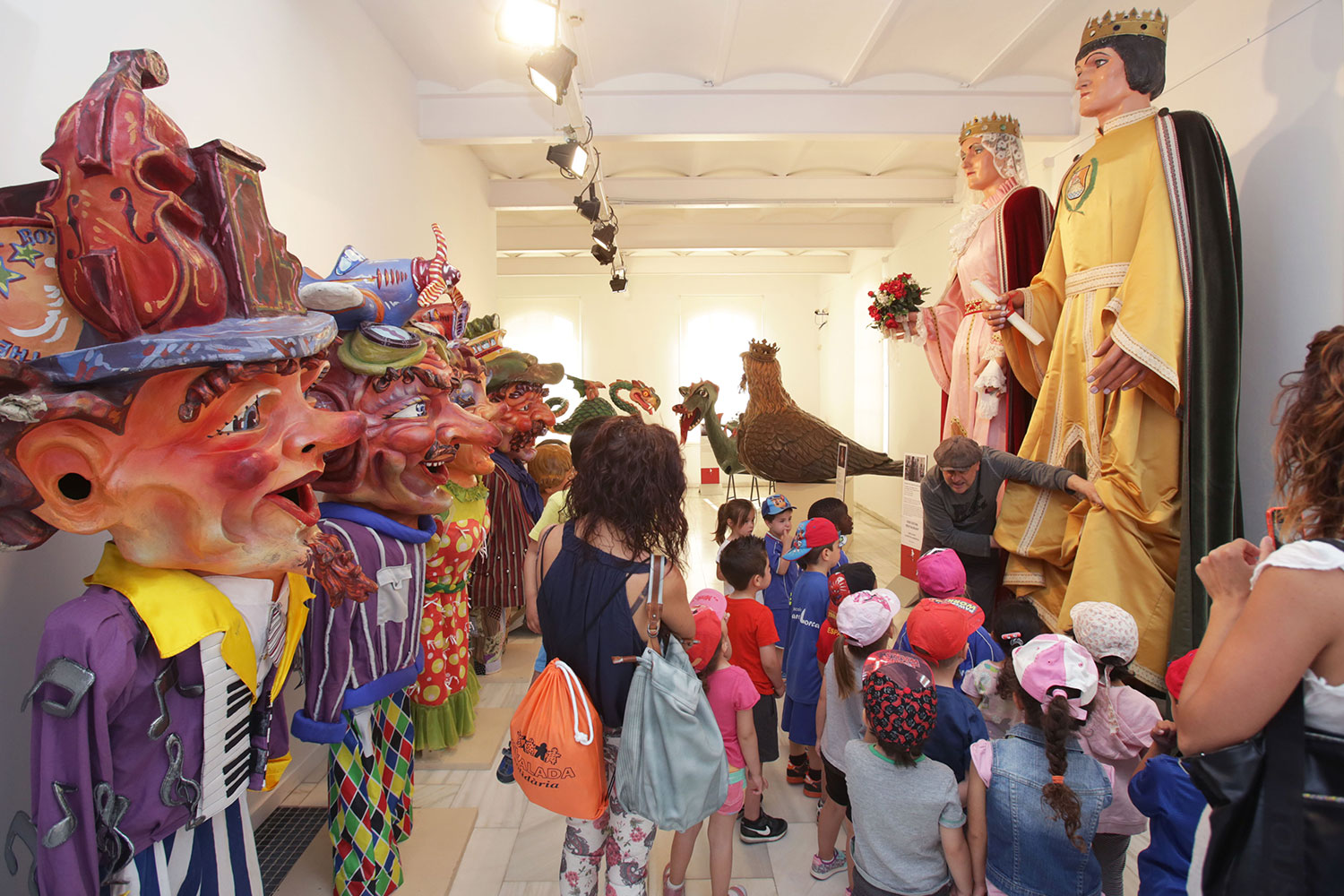Cal Granotes Tannery
Start > Spaces > Cal Granotes Tannery
Cal Granotes is an 18th century tannery located at the heart of the Rec district of Igualada, next to the canal from which the district derives its name. It still preserves the most characteristic features of a tannery was in operation three hundred years ago. Thanks to an engaging mise-en-scène of the craftsmanship and tools of that period, it is possible to appreciate the skillful processes employed before the advent of industrialization. The visit begins on the ground floor, known as the ribera or canal bank (with the vats where the hides were soaked, limed, defleshed and dressed) and continues on the upper floor, called the estenedor or drying frame (where they were dried, stretched, greased and polished). This entailed a laborious, manual process that took a year to complete, and which now takes no longer than two weeks.
Cal Granotes will be closed from July 2024 until the second half of 2025. The tannery begins a process of updating the building, adapting to the standards of environmental sustainability, and the implementation of a new, more immersive museography that will explain from the origins of the city of Igualada, the creation of the Rec neighborhood and the leather tanning trade in the XXI century.
Sorry for the inconvenience.
The Leather Museum
Cal Boyer
Start > Spaces > Leather Museum
The Leather Museum is housed in an emblematic building known as Cal Boyer, a former late-19th century cotton mill. Here you will find permanent exhibitions devoted to the uses of leather and the history and heritage of tanning in Igualada, as well as to the source and use of water in the manufacturing process.
Leather Craft Hall
Generations of tanners have devoted their lives to the production of leather in Igualada. This exhibition shows what pre-industrial activity was like in the factories that were built on the banks of an irrigation channel and which gave rise to a new district in the town. Development continued towards industrialization with the first machinery powered by new energy sources, which were gradually incorporated into the tanneries in order to speed up the all the soaking, defleshing and splitting and finishing processes involved in the production of the “shoe soles” —the cow hides characteristic of leather manufacture in Igualada— which throughout the 20th century served to consolidate this industry as one of the most foremost of those undertaken in the town.
A World of Leather Hall
The exhibits in this space show how leather developed alongside the evolution of humanity from its very beginnings, and how leather can be found in areas as diverse as clothing, utensils, transport, writing materials and sport, among others. Here you will find a judicious selection of objects made entirely or partially of leather, ranging from those employed in Roman times to the those in the 20th century, which are recognizable in local use as well as in distant cultures and which exemplify the many applications and uses of this highly valued material.
People and Water Hall
This hall provides an overview of how water was sourced and used in the production process. Throughout history, machines of all types have been invented for obtaining water and putting it to maximum use, whether in agriculture, in daily life or as a source of energy. The hydraulic machinery and the tools in this collection provide examples of the different methods of how water was obtained and used, while in the experimentation channel a reproduction of the system can be set in motion to demonstrate how it operated.
Casa de la Festa
Start> Spaces > Casa de la Festa
The Festival House, also know as Casa de la Festa, is located in the old Cal Boyer steam room and contains many of the artifacts used in the popular festivals held in Igualada. They include the iconic figures of the giants; the capgrossos (big heads) of igualada, the nanos (dwarfs) of Igualada, the giants of the Sant Ignasi and Poble Sec districts, the Tonet and Conxita and the Pia and Tomeu giants, as well as the town eagle and the town dragon, the Víbria Jove and the Víbria of the Town, the Bufarot and the little dragon of Igualada. They are all on permanent exhibition and can be visited on the unguided tour of the museum during regular opening hours. Some of these exhibits may be temporarily unavailable, either because they are taking part in festivals or because they are undergoing restauration.
Other Spaces
Start> Spaces > Other Spaces
The Festival House
Start > Spaces > Festival House
l’Espelt Roman villa. A villa to discover
This Roman villa consists of an archeological site containing the remains of an agricultural and livestock farm that dates mainly from the 2nd century AD. It is located in the village of l’Espelt (Òdena), close to Igualada, and is surrounded by trees and fields of cereal on non-irrigated land, much like that which would have existed in Roman times. This is the most notable Roman villa to have been discovered in the county of l’Anoia and is officially recognized as being of national cultural interest. Further information can be found at:
Igualadina Cotonera Factory.
A symbol of the first industrial revolution in Catalonia
This complex is known as the Vapor Vell (the Old Steam Room). It was built cerca 1842 and is the oldest remaining example in Catalonia of a factory constructed in the Manchester style, with an intact original structure that has changed little since it was first built. It was one of the main cotton mills for the manufacture of cloth and yarn during the industrial revolution in Catalonia and remained in operation until 1967. It was officially recognized as being of national cultural interest in 1997.
Sant Jaume Sesoliveres Church.
800 years of history written on the walls
On the walls of this church, located on the traditional St. James Way to Santiago de Compostela, one may read the life story of the building since its construction almost a thousand years ago, including how the first floor was used for grain storage until the church suffered severe damage as the result of an earthquake. Built in the late 12th century, the building underwent restauration in the late 20th century, thereby recovering an historical vision of the edifice and the visible evidence of the passage of time. It is a monument of recognized national interest.
Cal Pasqual Gas Generator.
Producing energy with wood gas.
The Cal Pasqual gas generator for the textile industry came into operation after the Civil War and remained active until 1955. It produced gas mainly from wood, a type of energy little used but quite important during the transition from steam to electricty. Furthermore, it provided a viable alternative in times of acute energy shortage. The Cal Pasqual gas generator is the only one of its kind that still exists in Catalonia.
To visit these spaces by prior appointment, call 938046752 or send an email to m.igualada@diba.cat.







